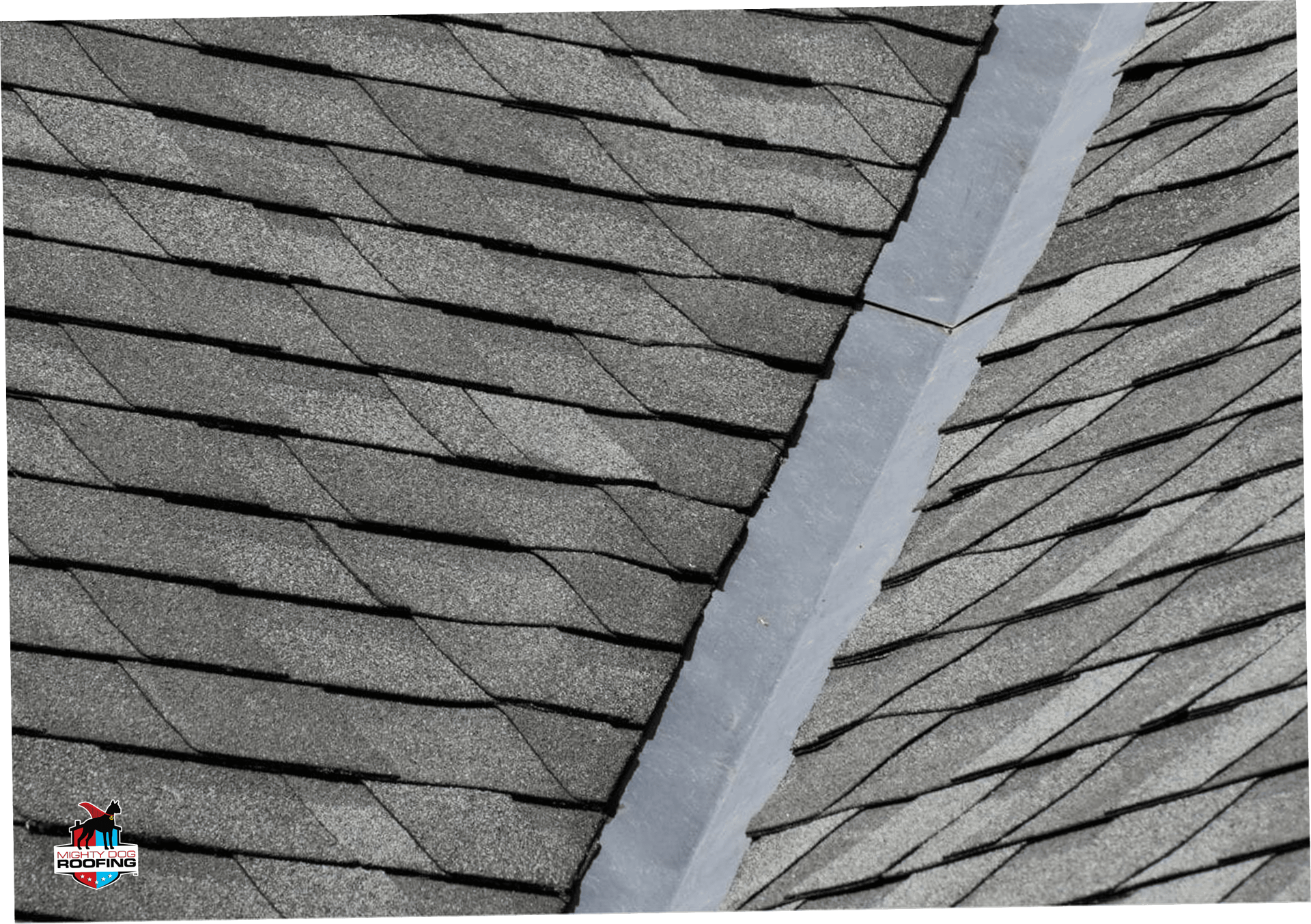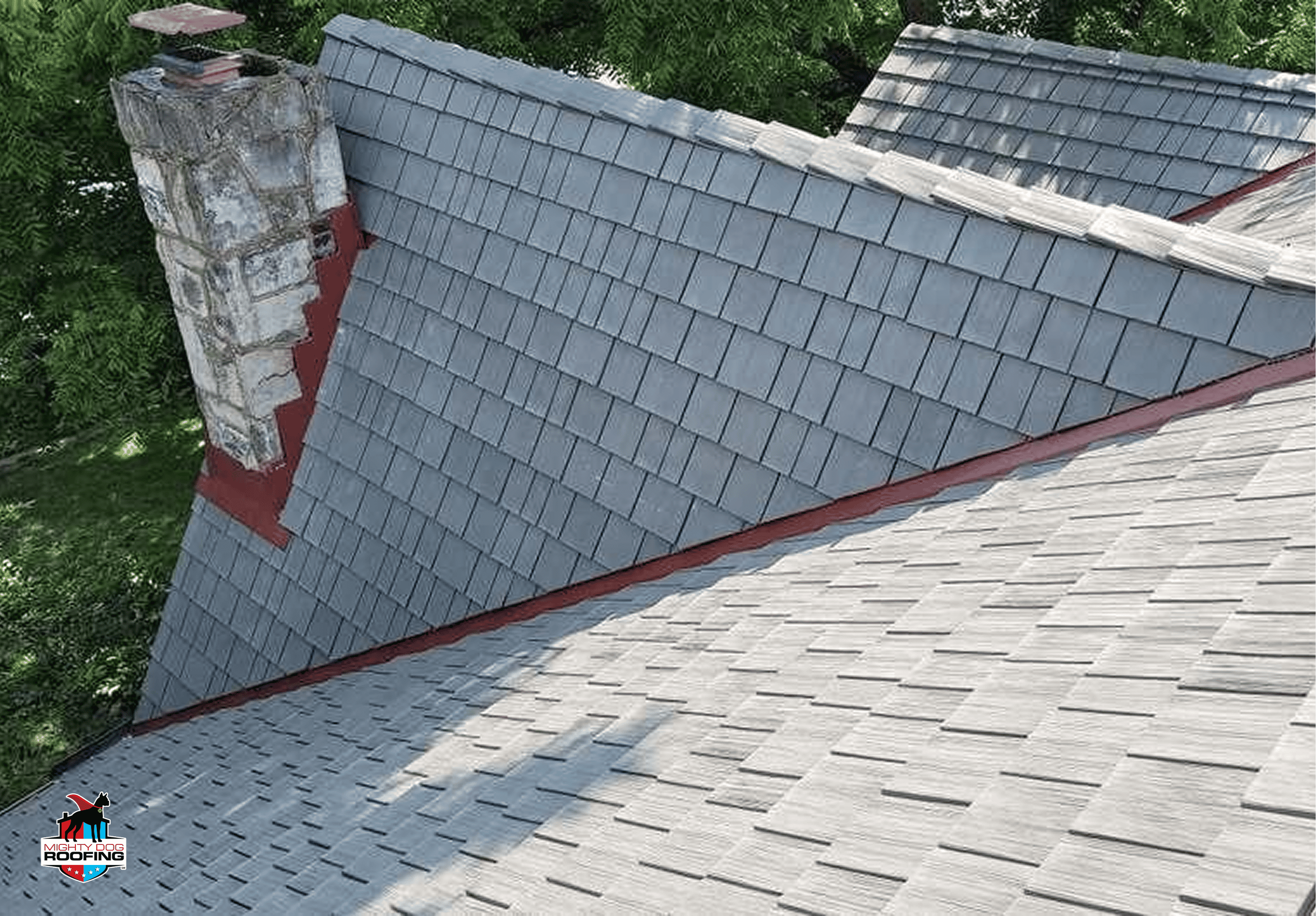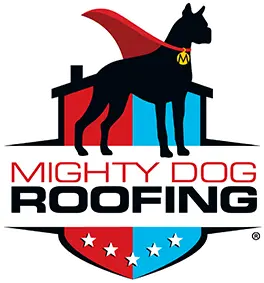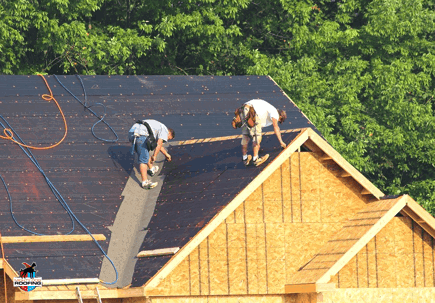These V-shaped channels, where two roof planes meet, are the most critical feature for managing heavy rain and snowmelt on your home. Throughout Pennsylvania's unpredictable weather patterns, these essential meeting points bear the burden of processing substantial amounts of rainwater and melting snow. Though frequently ignored until complications arise, deterioration at these crucial intersections results in extensive property harm across Chester County residences. We'll examine the importance of these fundamental elements and demonstrate how skilled professionals effectively resolve issues prior to expensive restoration becoming necessary.
What Roof Valleys Do and Why They Matter
These purposefully designed channels function as central gathering zones, directing rainwater from various roofing areas into gutter systems and discharge pipes. Such convergence points handle considerably greater liquid quantities compared to regular roofing surfaces - frequently managing approximately 80% of rainfall collected during Pennsylvania's intense weather events. Their configuration establishes inherent gathering locations where liquid accumulates prior to redirection away from building structures. Recognizing various roof valley types proves vital for property owners committed to safeguarding their real estate from weather-induced deterioration.
Pennsylvania Valley Performance Factors:
Climate Element | Impact on Function | Maintenance Consideration |
Heavy Spring Rain | Increased flow volume and velocity | Seasonal inspection critical |
Winter Snow/Ice | Ice dam formation risk | Proper insulation/ventilation needed |
Fall Leaf Debris | Potential blockage and backup | Regular clearing essential |
Temperature Swings | Metal expansion/contraction | Quality flashing material important |
Properties across our area showcase varied building designs, ranging from traditional colonial structures featuring numerous intricate junctions to contemporary buildings utilizing streamlined configurations. Despite architectural differences, such meeting points continue representing significant weak spots demanding expert evaluation. Skilled roofing experts note that properties containing several dormers, extensions, or intricate layouts generally possess additional junctions, thereby requiring enhanced upkeep. During severe winters when valley ice dam damage develops, prompt response from certified experts helps avoid major structural deterioration.

Types of Roof Valley Systems
Open Valley Construction
This approach incorporates exposed metal flashing extending along the complete span where surfaces meet. The uncovered structure effectively moves rainfall via an unobstructed route, avoiding accumulation despite Pennsylvania's most intense storms. Metal flashing materials (usually copper, aluminum, or treated steel) form a resilient shield safeguarding susceptible joints underneath.
Such configurations perform exceptionally within our area's fluctuating weather, especially through cold seasons when frozen buildup poses structural risks. Although the initial costs are higher, their superior water control and extended durability often make them the best choice for high-quality, long-lasting roofing projects. During open valley vs closed valley comparisons, roof repair contractors focused on excellence commonly suggest open layouts for maximum effectiveness. The open valley vs closed valley discussion typically involves balancing extended service life against visual appeal.
Closed Cut Valley Systems
Closed cut methods remove exposed metal using procedures where materials from a single surface continue past the midpoint, as neighboring surface materials get trimmed following a precise boundary along the meeting point. This produces an elegant, unified look favored by property owners desiring sophisticated appearances matching building designs common across our locale. This technique demands accurate setup including correct substrate and metal protection under materials, since weak spots frequently emerge at trimmed boundaries touching central areas, especially following temperature variations that compromise material bonding. Numerous roof valley problems originate from faulty closed cut setups lacking sufficient weatherproofing that permits liquid penetration.
Woven Valley Methods
Woven setup interlaces materials from each surface throughout the meeting point, producing an overlapping sequence lacking exposed metalwork. This classic technique functions successfully using standard asphalt materials and forms a liquid-blocking seal through correct setup including sufficient substrate shielding below.
Nevertheless, interlaced arrangements encounter restrictions using contemporary layered or designer materials, proving excessively dense and inflexible for adequate interlacing without forming susceptible openings. Numerous older Pennsylvania properties display interlaced setups needing expert understanding throughout renewal. Skilled roofing professionals carefully assess such mature configurations, frequently suggesting transformation toward dependable alternatives throughout extensive renovations addressing typical deterioration in older structures. Pennsylvania roof valleys featuring interlaced patterns demand special focus throughout evaluation periods.
Common Valley Failure Points in Pennsylvania Homes
Pennsylvania roof valleys encounter distinctive obstacles from regional weather's significant seasonal shifts. Heavy snowfall, springtime downpours, and intense summer weather systems generate remarkable pressure upon these essential meeting points. Eventually, correctly placed configurations experience weaknesses through persistent contact with focused runoff and material buildup. Chester County roof repair experts witness such difficulties regularly among the locality's varied residential properties.
Primary Valley Failure Causes:
- Temperature fluctuations inducing flashing detachment through continuous stretching/shrinking.
- Frozen accumulations holding liquid under materials near junction boundaries.
- Protective coating erosion intensifies within rapid-flow zones, revealing base components.
- Storm-carried materials gathering and restricting adequate discharge paths.
Skilled roofing specialists regularly find early damage caused by incorrect installation, such as inadequate substrate, limited flashing, or improper fastening near the center of the valley. These weaknesses are quickly exploited by Pennsylvania's harsh weather. Such roof valley failure demonstrates the importance of expert setup by seasoned professionals for sustained effectiveness. Comprehending roof valley failure enables homeowners to predict upkeep requirements.
Signs Your Roof Valley Needs Attention
Junction complications generally reveal themselves via particular alerts prior to complete breakdown happening. Identifying such preliminary signals enables appropriate response that avoids major inside harm. Consistent examination covering internal and external signs assists property owners in detecting issues ahead of serious infiltration forming. Valley flashing repair grows increasingly difficult and costly once complications remain unaddressed.
Key Valley Warning Signs:
- Discoloration developing upon inside surfaces close to junctions.
- Material boundaries near meeting points displaying deterioration, harm, or coating depletion.
- Apparent spaces forming amid metalwork and adjacent covering components.
- Oxidation or decay appearing upon metallic elements.
- Material buildup or plant development inside discharge paths.
Once such indicators emerge, reaching out to certified experts for evaluation avoids the progressive harm that neglected roof valley leaks Pennsylvania property owners frequently endure. Chester County roof repair professionals employ comprehensive examination methods detecting current issues and emerging complications prior to intensification. Our specialists thoroughly investigate obvious roof valley problems while also checking adjacent sections for concealed damage that could compromise the roof's overall integrity. Such detailed assessment guarantees every possible concern receives treatment throughout restoration efforts.

Valley Repair vs Complete Valley Replacement
Following junction complications emerging, property owners encounter a crucial choice regarding specific fixes versus total renewal. Small concerns including limited metalwork deterioration or minimal material decline near boundaries frequently benefit from targeted valley flashing repair by certified professionals. Such precise measures demonstrate economic efficiency provided foundational elements stay intact. Numerous roof repair contractors near you suggest resolving small concerns immediately avoiding progression.
Nonetheless, full renewal proves essential once widespread breakdown indicators emerge. Extensive decline, several infiltration locations, or major metalwork deterioration generally suggest junction liquid control effectiveness suffered irreparable compromise. Mighty Dog Roofing of Greater West Chester assesses circumstances employing expert evaluation procedures assisting Pennsylvania property owners in reaching educated choices regarding suitable measures for particular conditions. Continuing roof valley leaks Pennsylvania buildings encounter frequently indicate total renewal necessity instead of temporary fixes.
Protecting Your Pennsylvania Home from Valley Failures
Forward-thinking upkeep considerably improves durability while avoiding expensive liquid harm. Arrange expert evaluations biannually—preferably during springtime and autumn—detecting emerging complications ahead of intensification. Maintain junction cleanliness, especially following weather events and throughout fall foliage periods. Think about adding effective gutter protection avoiding discharge pipe blockages causing liquid reversal toward discharge paths. Regarding mature properties, Mighty Dog Roofing of Greater West Chester evaluates if valley ice dam damage needs resolution via enhanced airflow or contemporary protective substrate setup throughout upcoming maintenance efforts. Recognizing different roof valley types assists property owners in reaching educated choices regarding extended safeguarding approaches for their investments.


